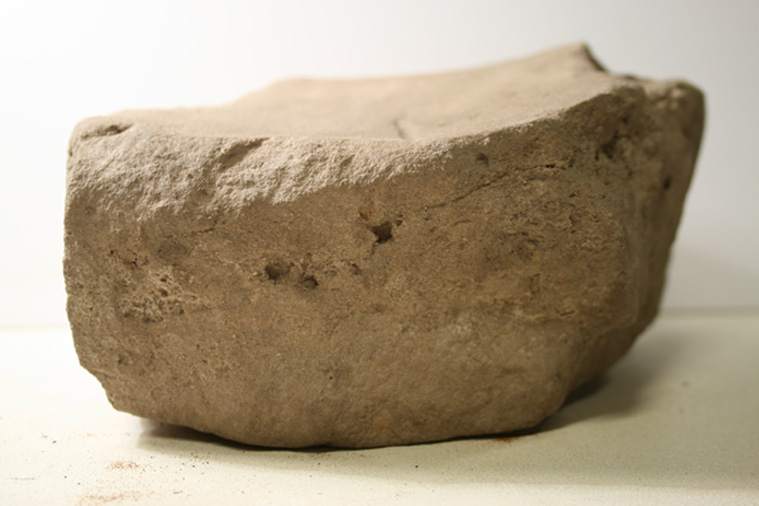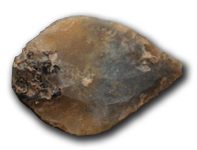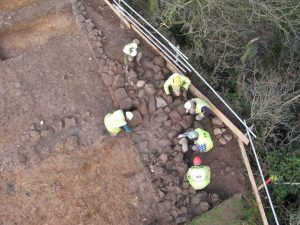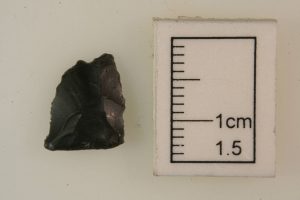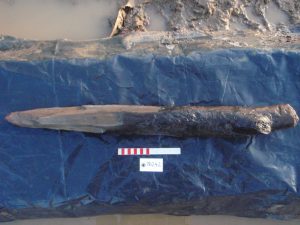A large stone with a slightly dished upper surface was recovered from a pit cut in at a Neolithic level within the palaeochannel, possibly post-dating the main phase of use of the wooden platform. The stone may have been a fragment of what was once a much bigger object. Radiocarbon assay of a hazelnut within the pit yielded a result of 3630-3360 cal BC. A groove had been worn into the, slightly undulating, dished surface and, being made of sandstone, it is possible that this object was a polissoir used in the finishing of ground-stone axes, like those also found within the channel.
